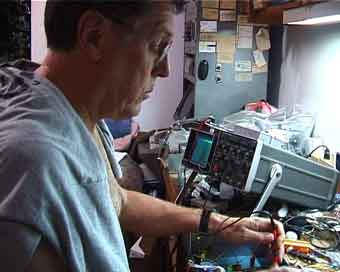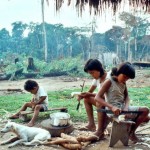Ramon Bolima – Urbanization
What is urbanization?
Why is urbanization happening?
How can be urbanization related to globalization?
How is urbanization affecting us?
How important is urbanization?
This video may shed some light to those questions about urbanization.
Paul Bruins – Watch: 129 Years Of Cape Town In 30 Seconds
futurecapetown.com – March 6, 2013.
Paul Bruins on creating the video: I was recently commissioned to recreate a panorama of Cape Town and Table Mountain, captured from Signal Hill in 1884 by W.F.H. Pocock.
Not only did the brief require me to recapture the panorama from the exact same vantage point as the original, but I also had to find the current owner of the original prints (now in the possession of John Rennie), scan the photos, and then hand-stitch them into one seamless panorama (the original four photos had no overlap). And since there was a fair amount of dust, hairs and scratches on the originals, I also had to spend a couple of hours cleaning everything up after stitching the panorama.
Fortunately I managed to find the exact same spot where the original photos were captured, so I was able to shoot my modern version of Mr. Pocock’s amazing 1884 panorama. And fortunately I correctly guessed the focal length that was used to capture the original photos, so my panorama came out looking almost exactly the same as the original.
Watch: http://futurecapetown.com/cape-town-in-30-seconds/#.UWUp7t10Xbp
African Slum Journal
African Slum Journal empoweres young africans to tell their own stories straight from the slums of Nairobi and Kenia
See more: http://africanslumjournal.com/mobile
Norman White – But I would prefer that it sneaks in through some back door
The Normill is an old watermill in Durham (Ontario, Canada), a village 80 miles Northwest of Toronto. The big stone building next to a stunningly beautiful pond, was bought years ago by artist Norman T White (San Antonio, Texas, 1938)
The mill smells like old flour, animal carcasses and bat shit and harbours the soul of Norman White. His personal history is visible in the old photos of the Dutch fisherman relatives of his mother. The building is littered with the material his work is made of: machine parts and a bunch of old computers. The raw architecture of the construction seems hardly altered in the years White lived in it. He sleeps over the gas stove in the kitchen in a small attic. The reason why he lodges here lies in the cold winters, when snow piles up and the temperature drops below zero. The building is spacious: it has a clean working spot; a big storage space, a cellar, actually a steel workshop; a room full of closets and drawers stacked with electronics; enough room for a large bat colony that lives in the cracks in the impressive walls.
You can walk around for hours, investigate the archives, the boxes with machine parts and printed circuit boards, wired art pieces in themselves. In the corner of the cellar leans a big raft made of plastic bottles against the wall.
Norman White, in his seventies, looks young: more a boy then a man. His friends say that his looks never changed, he is the same as thirty years ago. White is a myth in and outside of Canada. He is one of the godfathers of electronic-, machine- and robotic art and taught for more then twenty five years at the Ontario College of Art and Design in Toronto. His offspring is well known in the electronic art world, Doug Back, Peter Flemming, Jeff Man, Graham Smith and David Rokeby are his former students. And they all visit his annual parties at the Normill, to celebrate their friendship with fires, swimming, music and art. Regularly artists from all over the world join and camp at the mill. White and his friends organised robot fights, machine wrestling: ‘Rawbotics & Sumo robots’ long before it became fashionable. Read more
Life in Mathare Slums- A documentary On Life In A Kenyan Slum
Clean Energy For The Slums Of Johannesburg
South Africa’s most populous city is attracting more and more people on the search for work and a better life. Most of the migrants find housing in derelict buildings and slum-like settlements without electricity. How to provide these people with clean and affordable energy is the aim of the German-South African “EnerKey” research project.
Read more: http://www.dw.de/program/tomorrow-today



